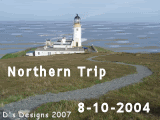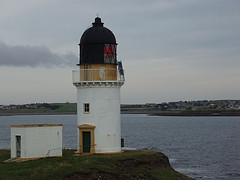For reference, a tropical cyclone, typhoon or hurricane are all the same thing. It is the atmosphere's safety valve, to divert the energy of the sun, beating down on the tropics, to higher latitudes. Safety valves can blow spectacularly, and anyone who has sat through a hurricane (I haven't) knows what I'm talking about.
I have copied below information from the Bajainsider.com website, which explains how a tropical cyclone actually forms. In the Atlantic and Eastern Pacific, it all starts with a Tropical Wave, a trough of superheated air driven west from the Sahara Desert almost half the planet away along the Inter Tropical Convergence Zone or ITCZ. The wave then needs to find some hot water, water in excess of 26°C (79°F). The hot dry air sucks the water vapor from the surface of the ocean and upward into the atmosphere, where it becomes cooler and condenses out on dust particles driven from the desert sands, it begins to rain and an engine has been created.
| Cyclones & Coriolis |
|
|
|
The rotation of the earth has a more profound effect on the side of the storm furthest from the equator. Trying to spin faster on the northern side (green arrow) you can see the 'vacuum' created as the storm is fast and tight on that side. On the southern side the push is weaker and the storm bunches up. This wobble is why northern hemisphere storms want to spin off the the WNW. |
Now, things need to be just right at this point to allow the fragile mechanics of a tropical cyclone to get started. The system needs still air, free from conflicting multilevel currents, vertical shears and cross winds. This allows the column of this convection to become established. Water vapor rises, cools at high altitudes and precipitates out of the air, becoming rising water vapor again as it reaches the hot dry surface air. A nearby dry air mass or winds from opposing systems can preclude development. This adjacent dry air mass is why June has been so quiet. The lack of significant moisture and increased mid level winds, possibly attributed to the mild La Nina effect, have kept our June tropical waves from becoming tropical cyclones.
I've been doing some reading on the subject of hurricanes, as I always try and 'tune up' for the real threat to Baja later in the season. I learned that hurricanes need a specific location to form as well. The Coriolis Effect is what makes your toilet flush counter-clockwise in the northern hemisphere and clockwise in the southern hemisphere. it is also an integral factor in the formation of tropical cyclones.
Tropical Cyclones must form about 300 miles away from the equator for there to be enough of the earth's spinning effect to cause the storms to begin to rotate - counter clockwise in the northern hemisphere. Now, I have stood on the Equator and believe me, RIGHT ON the equator the water literally falls through a funnel in a disorganized fashion. No more than 15 meters north or south, the water spins in the appropriate direction. Tropical cyclones need a little more energy applied to them to start rotation, and therefore can not form closer than 300 miles from the equator
The
effect is also responsible for the initial movement of the storm. As
the storm spins the northern edge and southern edge of the storm can
be hundreds of miles apart, north to south. This means that the
Coriolis Effect has a much greater influence on the northern side of
the storm than the southern. As the storm rotates the wind 'bunches
up' at two locations, about 1 and 7 o'clock in the NNE and the SSW
side of northern hemisphere storms. Imagine a group of about 20 people
holding hands in a large circle. As the group turns as a whole circle
on a flat surface, everything is orderly. Now, imagine that there is a
hill on the south corner (where the effect is less and the rotation of
the storm receives less push) and a slide on the north corner. (where
the effect is trying to make the storm spin faster). The ring of
people won't remain organized for long, crowds bunching up at the
climb and slide. Right after the slide, people will run to catch up
with the person in front of them,
| SST Analysis |
|
|
|
Tropical cyclones thrive in waters warmer than 26° C and degenerate in waters below that temp. Areas south and east of the red line have the potential for a tropical storm strike |
accelerating the ring. This is why the leading/right side of a northern hemisphere tropical cyclone packs the worst punch and why often times, as John showed us in 2006, that the worst rain comes when the storm bunches up on the SSW corner. This is also why the weather chart symbol for a tropical cyclone looks like it does!
Finally lets take a look at the water temperature in
the Hurricane Birthing Zone. The all important 26°C thermo cline is
edging closer to Baja Sur. Already 1/2 way from PV to Cabo and well up
the mainland side into the Sea it will be another month before that
line gets close enough for us to start to worry about landfall of a
system. Tropical cyclones disintegrate quickly once over cooler waters
and the worst we could expect until that time is a lot of rain and
some wind. But the +30°C water is becoming a significant area on our
map and it's only a matter of time before the ITCZ delivers a Tropical
Wave to the area and we have a storm to watch.











THis was very interesting... I just which the knots where mph's!!! Such a typical American aren't I??? LOL
ReplyDeletebe well,
Dawn
http://journals.aol.com/princesssaurora/CarpeDiem/